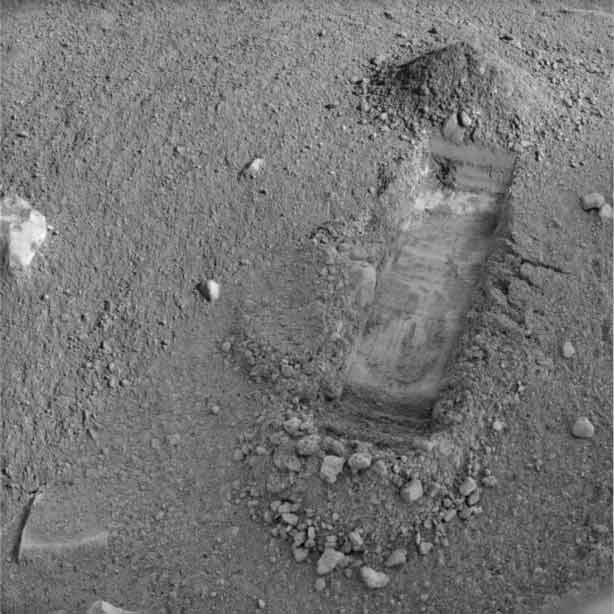Mars Robot to Dig Deeper

NASA's Mars Phoenix Lander began digging a new trench in the"national park" region that mission scientists have been saving forscience.
The first scoop of Mars dirt from the new trench, calledSnow White, was excavated early Tuesday. While digging this pit, Phoenix'srobotic arm did not reach the hard white material, possibly ice, that itexposed previously in the first trench it dug.
This was to be expected, scientists said, because the SnowWhite trench is near the middle of a polygonal-shaped region named Cheshire Catwhere scientists think the white material would be buried under a thicker layerof the sand and dirt scientists call regolith.
Phoenix has been digging away since the $420-millionspacecraft landed on Mars May 25. So far it has found noliquid water in its first soil samples.
The Snow White trench is about three-quarters of an inch(about two centimeters) deep and about a foot (30 centimeters) long. ThePhoenix team plans at least one more day of digging deeper.
In the future, scientists plan to dig another trench in thecenter of the Cheshire Cat polygon. They hope to study the soil structure ofSnow White to decide how deep to collect samples in the next pit.
Phoenix's Thermaland Evolved-Gas Analyzer (TEGA) oven instrument is still working on bakingpreviously collected soil samples to look for volatile ingredients, such aswater.
Get the Space.com Newsletter
Breaking space news, the latest updates on rocket launches, skywatching events and more!
- Video: Sounds From Phoenix Mars Lander's Descent
- Video: NASA's Phoenix: Rising to the Red Planet
- New Images: Phoenix on Mars!
Join our Space Forums to keep talking space on the latest missions, night sky and more! And if you have a news tip, correction or comment, let us know at: community@space.com.

Clara Moskowitz is a science and space writer who joined the Space.com team in 2008 and served as Assistant Managing Editor from 2011 to 2013. Clara has a bachelor's degree in astronomy and physics from Wesleyan University, and a graduate certificate in science writing from the University of California, Santa Cruz. She covers everything from astronomy to human spaceflight and once aced a NASTAR suborbital spaceflight training program for space missions. Clara is currently Associate Editor of Scientific American. To see her latest project is, follow Clara on Twitter.









